Large transit walksheds are great, but how big is big enough?
In other posts, we have described what a transit walkshed is, and how changes can be made to the pedestrian network to increase the walkshed area. Here, we explore how big is big enough.
The diagram below shows a half-mile circle around a transit station. If the station were located in a field of grass or on a massive parking lot, the walkable area of the circle would be the circle itself, 100% of the half-mile buffer around the station would be accessible by foot. Unfortunately, that wouldn’t bode well for transit use, since there wouldn’t be any origins or destinations within that walking distance.
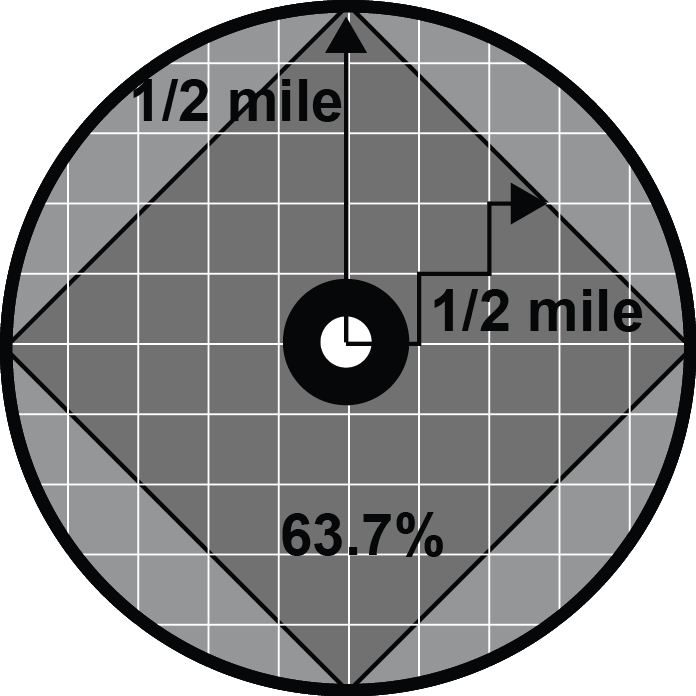 Now, let’s lay a perfect grid of streets across that half-mile buffer. The street area is where people can walk, and the remaining area contains houses, shops, mixed-use development, etc. The resulting walkshed for the station begins to look like a diamond inscribed inside the circle. The smaller the blocks (the closer the streets are to one another) the more the walkshed resembles a perfect diamond that has a diagonal distance equal to the diameter of the circle. If you take the area of the diamond and that of the circle and compare them, you find the walkshed (square) covers 63.7% of the circular station area buffer.
Now, let’s lay a perfect grid of streets across that half-mile buffer. The street area is where people can walk, and the remaining area contains houses, shops, mixed-use development, etc. The resulting walkshed for the station begins to look like a diamond inscribed inside the circle. The smaller the blocks (the closer the streets are to one another) the more the walkshed resembles a perfect diamond that has a diagonal distance equal to the diameter of the circle. If you take the area of the diamond and that of the circle and compare them, you find the walkshed (square) covers 63.7% of the circular station area buffer.
So if you have a perfect grid and get 63.7% coverage, how can you get any better? For one, diagonal streets can increase the coverage: if two diagonal streets were added to the grid, intersecting in the center of the circle at the transit station, the square walkshed would turn into an eight-pointed star, increasing coverage even more, but not by much.
An good example of a walkshed greater than 63.7% is that of the Takoma station. Featured in a previous post, we recently calculated a 91% coverage for Takoma.
It is difficult to pick an ideal size for a transit walkshed. A larger percentage could be beneficial, but the additional roadway network needed to expand the coverage beyond 63.7% may result in less area dedicated to potential transit origins and destinations. (Remember the station in the parking lot?)
What Metrorail stations do you feel have good walkshed coverage? In your opinion, where can we improve?

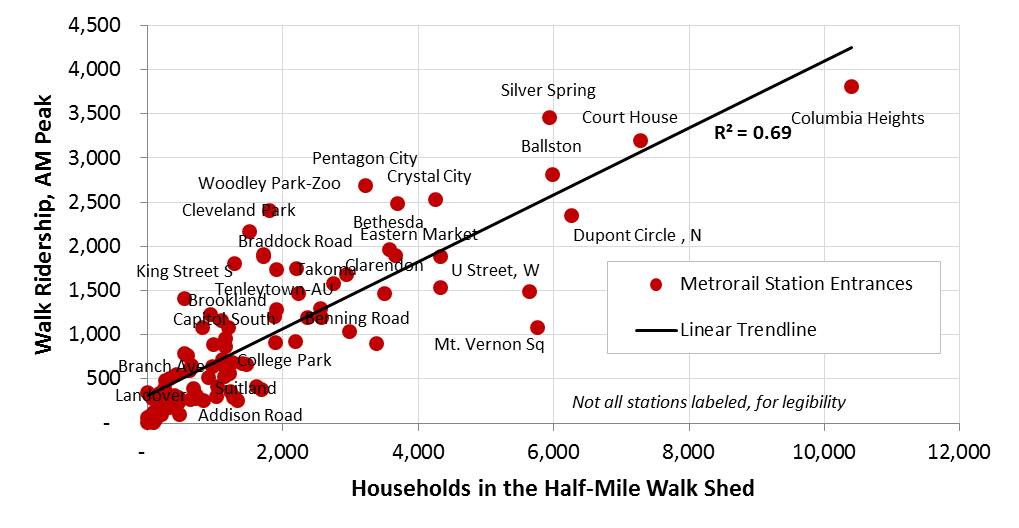
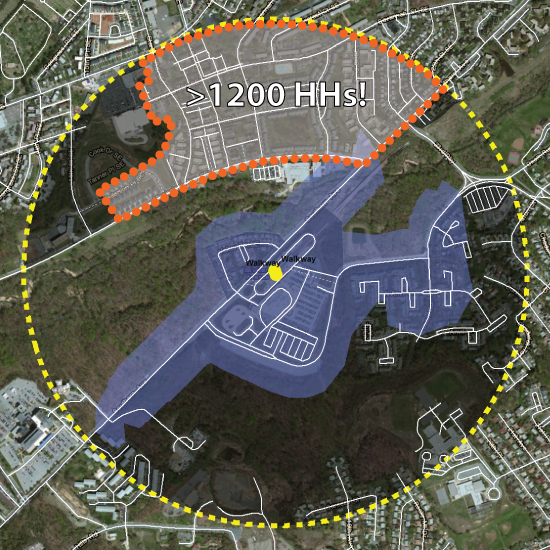
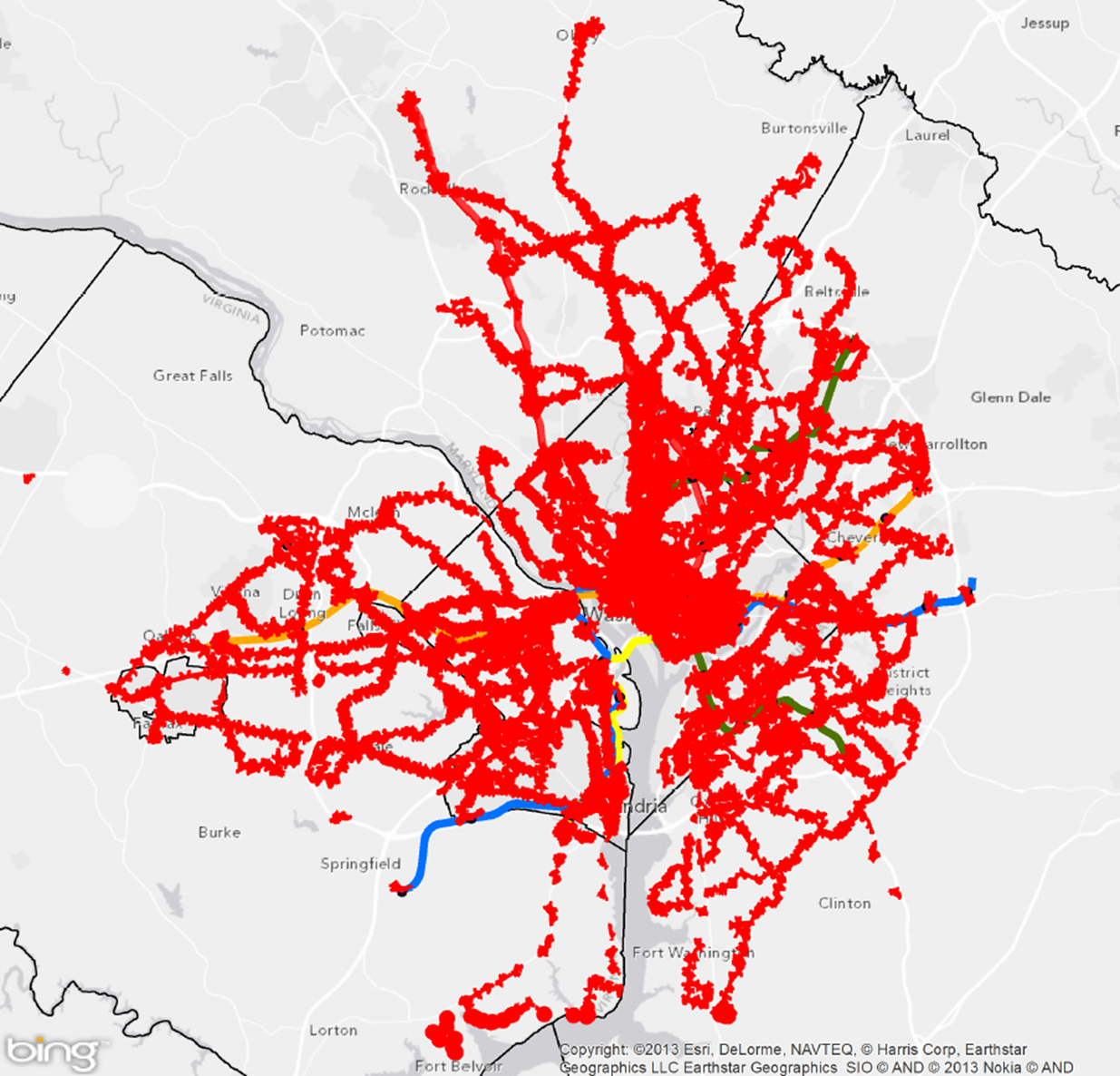


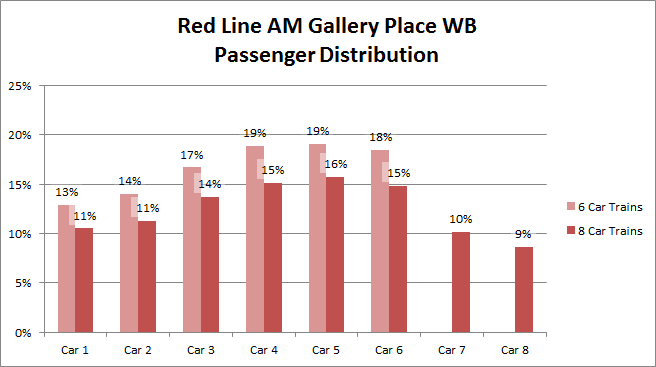
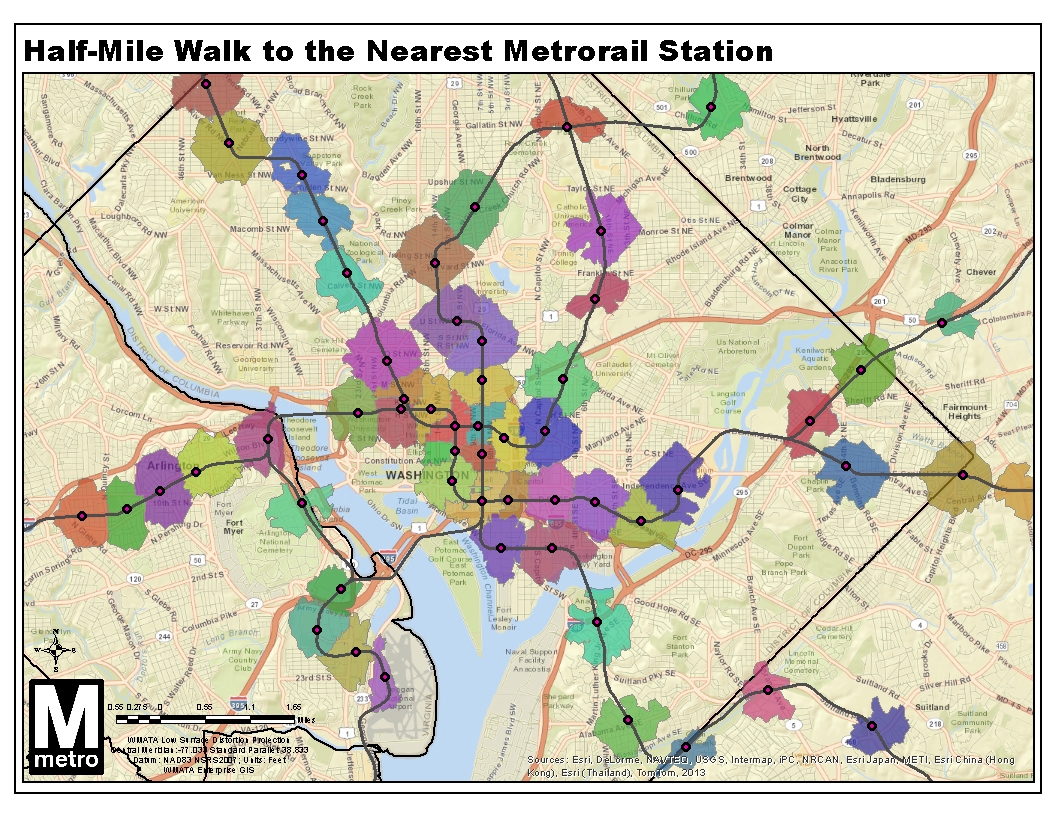
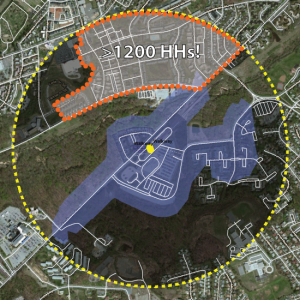
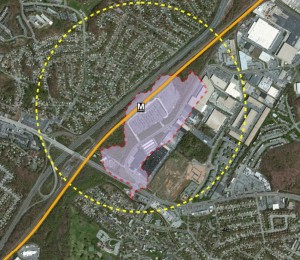
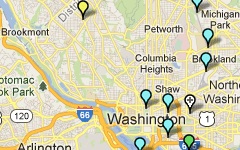
Recent Comments